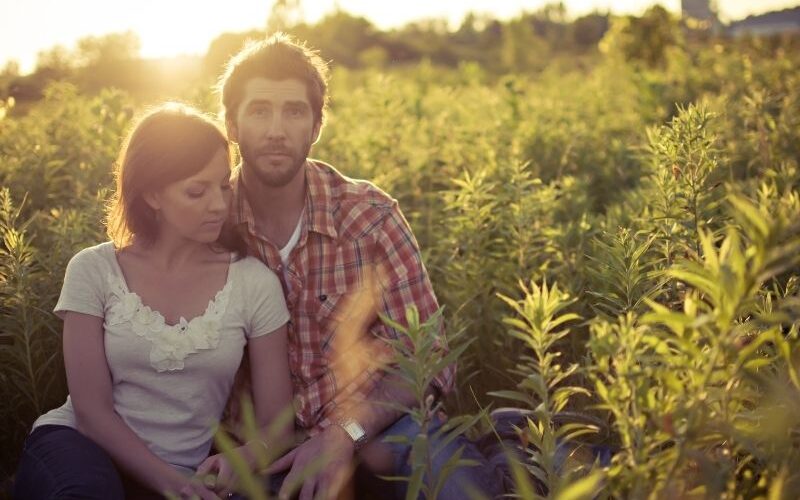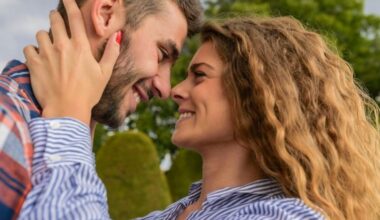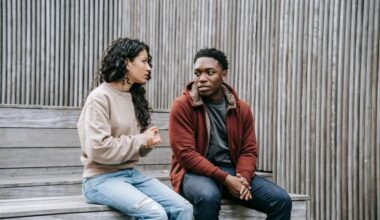Have you ever noticed that some couples seem to share a striking resemblance to each other? It’s not just a coincidence or an optical illusion; there are fascinating reasons why so many couples look alike. In this article, we will explore the various factors that contribute to this intriguing phenomenon.
Why Do So Many Couples Look Alike
1. Physical Attractiveness
Physical attractiveness plays a significant role in partner selection. People are generally drawn to individuals who possess traits that are culturally associated with beauty. When couples have similar facial features, body types, or other physical attributes, it can create a sense of harmony and visual compatibility.
2. Familiarity and Comfort
We often seek familiarity and comfort in our relationships. When two individuals look similar, it can evoke a sense of familiarity and create a comfortable environment. This shared physical resemblance can foster a deeper connection and understanding between partners.
3. Genetic Similarity
Genetics also contribute to why couples may look alike. Research suggests that we are subconsciously attracted to individuals who possess genetic similarities to ourselves. These genetic similarities can be reflected in facial structure, body composition, or other physical traits. By choosing a partner who shares similar genetic characteristics, we increase the likelihood of passing on favorable traits to our offspring.
4. Evolutionary Benefits
From an evolutionary perspective, selecting a genetically similar partner can be advantageous. It promotes genetic compatibility and reduces the risk of inbreeding. Additionally, shared genetic traits can contribute to better communication, understanding, and compatibility within the relationship.
5. Shared Interests and Hobbies
Couples who spend a significant amount of time together often develop shared interests and hobbies. Engaging in similar activities can influence physical appearance over time. For example, couples who enjoy outdoor activities may develop a similar tan or a more active physique. These shared lifestyle choices can lead to physical resemblances.
6. Dietary Habits and Exercise
Dietary habits and exercise routines can also contribute to couples looking alike. When partners share meals and follow similar eating patterns, their bodies may respond similarly to nutrition and exercise, resulting in similar physical attributes. Regular exercise routines and healthy habits can contribute to shared physical transformations.
7. Environmental Factors
The environment in which couples live can have an impact on their appearance. Couples who live together often share exposure to similar environmental elements such as sunlight, pollution, and climate. These factors can affect skin texture, hair color, and overall physical appearance, leading to resemblances between partners.
8. Emotional Bonding and Connection
Beyond physical traits, emotional bonding and connection between partners can also contribute to the similarity in appearance. Couples who share a deep emotional bond and spend a significant amount of time together may subconsciously mimic each other’s facial expressions, gestures, and body language. Over time, this mimicry can lead to a shared resemblance.
9. Mimicry and Synchronization
Humans have a natural tendency to mimic and synchronize with others, especially those with whom they feel a strong connection. Couples who are emotionally close may unconsciously adopt similar expressions, speech patterns, and mannerisms. This behavioral mimicry can extend to physical appearance, further enhancing the resemblance between partners.
10. Social Conditioning
Cultural norms and societal expectations can influence the way couples choose their partners. Certain cultures or communities may value physical similarities between partners as a sign of compatibility or social status. These cultural influences can shape individuals’ preferences and contribute to the similarity seen among couples.
11. Media and Popular Culture
Media, including movies, television shows, and celebrity culture, can also play a role in shaping our perceptions of an ideal couple. The media often portrays couples who share similar physical attributes as attractive and desirable. As a result, individuals may seek out partners who align with these perceived ideals, leading to an increased likelihood of couples looking alike.
12. Implicit Egotism
Implicit egotism refers to the unconscious preference for things that resemble oneself, including physical appearance. People may be more inclined to select partners who resemble them in some way due to the positive associations and self-validation that come with it. This psychological bias can contribute to the resemblance observed in many couples.
13. Cognitive Bias
Cognitive biases, such as confirmation bias and similarity bias, can also play a role in couples looking alike. Confirmation bias leads individuals to seek evidence that supports their existing beliefs. If someone believes that couples should resemble each other, they may unconsciously seek out relationships that confirm this belief. Similarly, similarity bias can influence partner selection by favoring individuals who share similar traits.
14. Convergence over Time
Over the course of a long-term relationship, couples often converge in their appearance. As they spend more time together, their habits, behaviors, and even physical characteristics may align. This convergence can be a result of shared experiences, emotional bonding, and the blending of lifestyle factors.
15. Shared Experiences and Memories
Shared experiences and memories are an integral part of any relationship. Couples who have been together for a long time accumulate a multitude of shared experiences and memories. These experiences create a strong bond and shape the way partners perceive themselves and each other, which can contribute to physical similarities.
Conclusion
The resemblance observed in many couples is not merely a coincidence. It stems from a combination of factors, including physical attractiveness, genetic similarity, shared lifestyle and environment, non-physical factors such as emotional bonding and mimicry, cultural influences, psychological explanations, and the role of time. While each couple’s resemblance is unique, these factors contribute to the intriguing phenomenon of couples looking alike.
FAQs
1. Are couples who look alike happier in their relationships? There is no direct correlation between physical resemblance and relationship happiness. The happiness of a couple depends on various factors such as communication, trust, and compatibility, rather than their physical appearance.
2. Can couples who don’t look alike have a successful relationship? Absolutely! Physical appearance is just one aspect of a relationship, and couples who don’t look alike can have equally successful and fulfilling relationships based on emotional connection, shared values, and mutual respect.
3. Can couples intentionally change their appearance to look more alike? While couples may share similar lifestyle habits or engage in activities together that can influence their appearance, intentionally changing one’s appearance to look like their partner may not be a healthy approach. It is essential to embrace individuality within a relationship.
4. Do same-sex couples also exhibit this resemblance phenomenon? Yes, same-sex couples can also exhibit the resemblance phenomenon. The factors influencing physical resemblance, such as shared lifestyle, emotional bonding, and mimicry, are not limited to heterosexual relationships.
5. Can couples who look alike be mistaken for siblings? It is possible for couples who share strong physical resemblances to be mistaken for siblings. However, people’s perceptions can vary, and not all couples who look alike will be mistaken for siblings.








